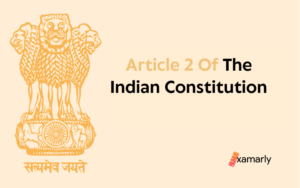An Overview
Welcome to our blog on the difference between village and city. In this blog, we will be exploring the key distinctions between these two types of settlements and the unique characteristics, advantages, and disadvantages that they possess. We will also delve into the ways in which these two environments differ in terms of lifestyle, opportunities, and overall quality of life.
As we delve deeper into the topic, we will examine the specific characteristics, advantages, and disadvantages of both villages and cities. We will also explore how these environments differ in terms of job opportunities, access to healthcare and education, and overall quality of life.
Read on as this blog will provide valuable insights into the unique features and experiences of each environment.
- An Overview
- Definition Of A Village
- Definition Of A City
- Difference Between Village And City
- Summing Up
- FAQs Related To Village And City
- What is the difference between a village and a city?
- What is the primary source of livelihood in a village?
- What are the advantages of living in a village?
- What are the disadvantages of living in a village?
- How does the pace of life differ between a village and a city?
- What is the population density of a village compared to a city?
- Are there any iconic landmarks in a village?
- How does the cost of living differ between a village and a city?
- Is there a limit to the number of people that can live in a village?
- Are there any different types of villages around the world?
Definition Of A Village
A village is a small, rural settlement typically consisting of a small group of houses and associated buildings. In a broader sense, a village can also be defined as a small, densely populated area that is usually found in the countryside.
Example Of Village
Examples of villages include traditional, agricultural villages found in developing countries, as well as small, rural settlements found in developed countries. Some villages may be very small, with only a handful of residents, while others may be larger and more developed, with amenities such as schools, shops, and medical facilities.
Characteristics Of A Village
- Strong sense of community
- Rural location
- Focus on agricultural or pastoral activities
- Limited access to modern amenities and infrastructure (e.g., paved roads, public transportation, high-speed internet)
- Smaller population compared to a city
- Agriculture as the primary source of livelihood
- A traditional way of life
- Close proximity to nature
Advantages Of A Village
- Strong sense of community and close relationships among residents
- A slower pace of life
- Generally safer and more peaceful compared to larger towns and cities
- Low crime rates
- Better access to fresh food and locally-sourced products
- Less pollution and traffic
- More affordable cost of living
- Closer connection to nature and the natural environment
Disadvantages Of Villages
- Lack of modern amenities and infrastructure
- Isolation and lack of social and cultural diversity
- Limited job opportunities and economic growth
- Limited access to healthcare, education, and other essential services
- Limited access to entertainment and cultural activities
- Limited transportation options
- Dependence on agriculture makes it vulnerable to natural disasters
- Limited privacy and freedom of expression.
Definition Of A City
A city is defined as a highly populated urban region that is home to at least 50,000 people. It is an administrative, cultural and economic centre of a region or country. Cities are known for their modern amenities, diverse population, and fast-paced lifestyle. They are characterised by tall buildings, busy streets, and a wide range of shops, businesses, and services. Cities also have a high population density and a complex network of social, economic, and transportation infrastructure.
Example Of A City
An example of a city is New York City, located in the state of New York in the United States. With a population of over 8 million people, it is one of the most populous cities in the world and is considered a global centre for finance, culture, and entertainment.
Characteristics Of A City
- Large population size, often in the millions
- High population density, with many people living in close proximity to one another
- A wide range of businesses and industries, as well as a variety of shops, restaurants, and other amenities
- A more fast-paced and hectic way of life, with more noise and pollution
- Often more diverse and cosmopolitan, with a mix of different cultures and people from all over the world
- Often surrounded by concrete and steel, which can make for a more man-made and artificial environment
- More public transportation options
- Urban sprawl and higher crime rate
Advantages Of A City
- More job opportunities and a wider range of career options
- More access to services and amenities, such as healthcare, education, and entertainment
- Greater cultural diversity and exposure to different ways of life
- A more dynamic and exciting way of life, with more options for leisure and entertainment
- Greater access to public transportation, making it easier to get around and reducing reliance on personal vehicles
- More opportunities for networking and professional development
Disadvantages Of A City
- High cost of living and difficulty in affording housing
- More noise and pollution
- Higher crime rate
- Crowded public spaces and traffic congestion
- More competition for jobs and services
- More stress and a lack of privacy
- Greater risk of environmental hazards, such as heat islands and urban flooding
- More difficult to build a sense of community and belonging
Difference Between Village And City
Villages and cities are two distinct forms of human settlements, each with its own unique characteristics and ways of life. While both provide a place for people to live and work, there are many differences between the two, from their size and population density to the types of activities and opportunities that are available.
- Perhaps the most obvious difference between a village and a city is their size. Villages are typically much smaller than cities, with populations that range from a few hundred to a few thousand people. Cities, on the other hand, have populations that can reach into the millions. This difference in size has a number of implications for the way of life in each type of settlement.
- One of the main differences is the level of population density. Villages are typically more spread out, with fewer people per square mile than in a city. This means that people in villages have more space and privacy, and there is less congestion on the roads and in public spaces. In contrast, cities are often densely populated, with many people living in close proximity to one another. This can lead to a more fast-paced and hectic way of life, with more noise and pollution.
- Another major difference between villages and cities is the types of activities and opportunities available. Villages are typically more rural, with fewer job opportunities and less access to services and amenities. People in villages may have to travel to a nearby city to find work or access certain services. Cities, on the other hand, are often home to a wide range of businesses and industries, as well as a variety of shops, restaurants, and other amenities. This means that people in cities have more options for work and leisure, and may be more likely to find something that suits their interests and needs.
- In terms of culture and community, village life is often more traditional and close-knit. Villagers tend to know each other well and may have a strong sense of community and belonging. They often have shared customs, traditions, and values that have been passed down through generations. In contrast, cities can be more diverse and cosmopolitan, with a mix of different cultures and people from all over the world. This can lead to a more dynamic and exciting way of life, but it can also make it harder to build a sense of community and belonging.
- Finally, there are also environmental differences between villages and cities. Villages are typically surrounded by more natural landscapes, such as fields, forests, and mountains. This can make for a more peaceful and scenic way of life, but it can also mean that villagers are more exposed to the elements and may have to deal with more natural hazards. Cities, on the other hand, are often surrounded by concrete and steel, which can make for a more man-made and artificial environment. This can lead to more pollution and a greater risk of environmental hazards, such as heat islands and urban flooding.
| Factors | Village | City |
|---|---|---|
| Language | A single, local language spoken | Multiple languages spoken |
| Food | Fresh, locally-sourced | A diverse range of cuisines |
| Transportation | Limited options | Wide range of options |
| Social life | Close-knit community | A diverse, cosmopolitan population |
| Ambience | Slow-paced, traditional | Fast-paced, modern |
| Infrastructure | Limited access to modern amenities | Wide range of amenities and services |
| Population | Small, low population density | Large, high population density |
| Recreation | Limited options | Wide range of options |
| Education | Limited options | Wide range of options |
| Employment | Limited job opportunities | Wide range of job opportunities |
| Pollution | Low | High |
| Medical facilities | Limited | Wide range of options |
| Culture | Traditional | Diverse, cosmopolitan |
| Natural environment | Close proximity to nature | Limited access to nature |
It is important to note that this table is only a generalisation and the actual situation may vary depending on the specific village or city.
Check Out Our Latest Blogs:
| Difference Between Socialism and Democracy | Difference Between Absolute And Relative Poverty |
| Right to Equality | Article 378 Of The Indian Constitution |
Summing Up
In conclusion, villages and cities are two very different forms of human settlements, each with their own unique characteristics and ways of life. While both provide a place for people to live and work, there are many differences between the two, from their size and population density to the types of activities and opportunities that are available. Understanding these differences can help us to appreciate the different strengths and challenges of both village and city life, and to make informed decisions about where we want to live and how we want to live our lives.
FAQs Related To Village And City
What is the difference between a village and a city?
A village is a small, rural settlement typically composed of a few hundred to a few thousand residents, while a city is a densely populated urban area with a population of at least 50,000 people.
What is the primary source of livelihood in a village?
Agriculture is the primary source of livelihood in a village. Many villagers are farmers and depend on the land for their livelihood.
What are the advantages of living in a village?
Villages offer a strong sense of community and social support, low crime rates, better access to fresh food, and a closer connection to nature.
What are the disadvantages of living in a village?
Villages have limited job opportunities and economic growth, limited access to healthcare and other services, and limited access to entertainment and cultural activities.
How does the pace of life differ between a village and a city?
Villages have a slower pace of life and a more traditional way of life, while cities have a fast-paced lifestyle.
What is the population density of a village compared to a city?
Villages have a low population density, while cities have a high population density.
Are there any iconic landmarks in a village?
Villages typically do not have iconic landmarks, while cities do.
How does the cost of living differ between a village and a city?
Villages have a more affordable cost of living than cities.
Is there a limit to the number of people that can live in a village?
The number of people that can live in a village is limited by the availability of resources, services, and infrastructure.
Are there any different types of villages around the world?
Yes, depending on the location and context, there can be a range of different types of villages around the world, each with its own unique characteristics.






